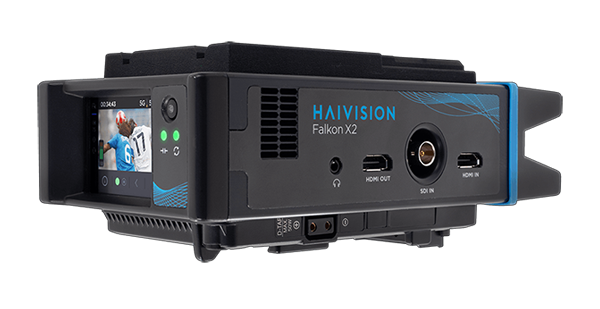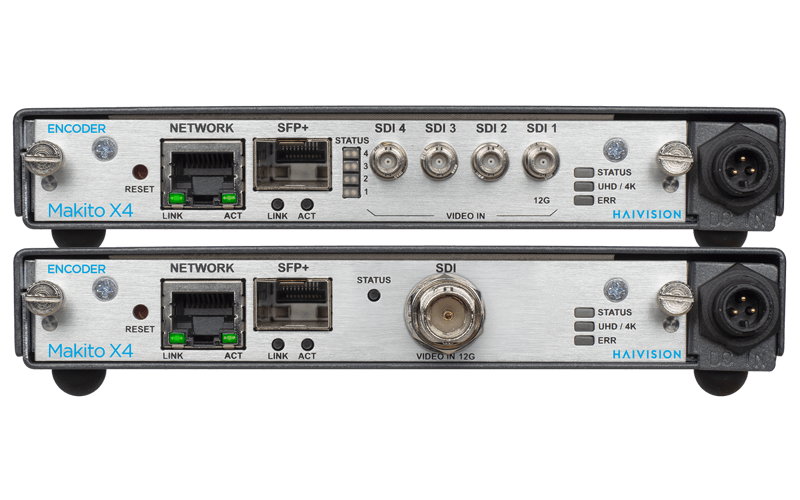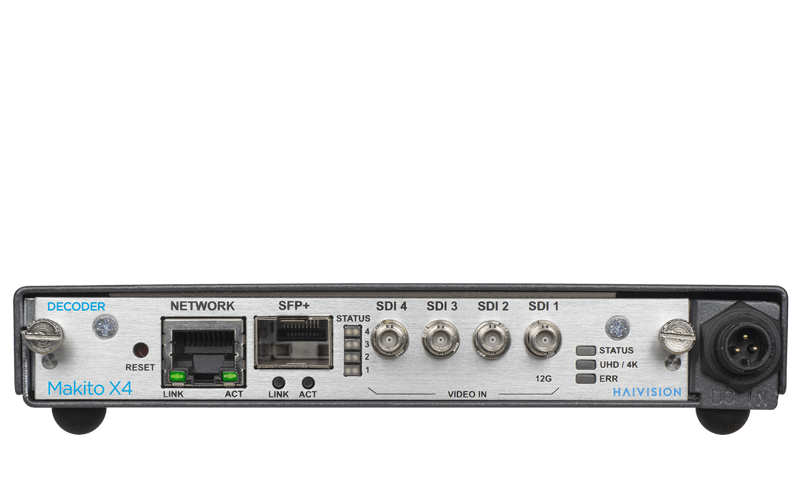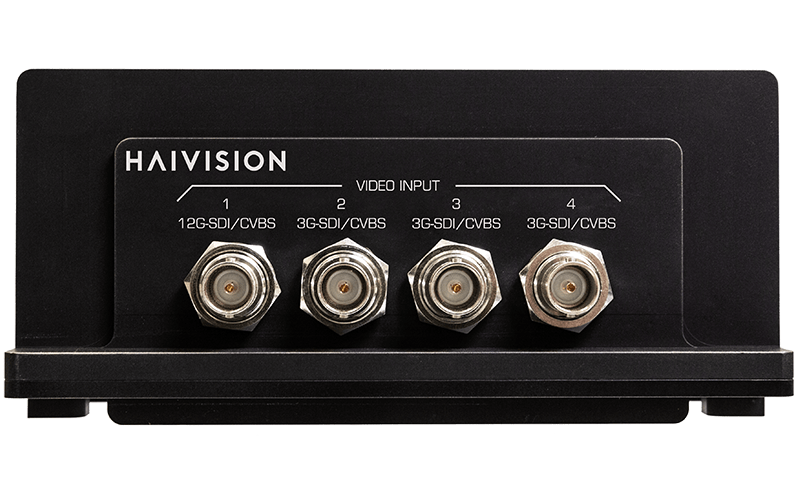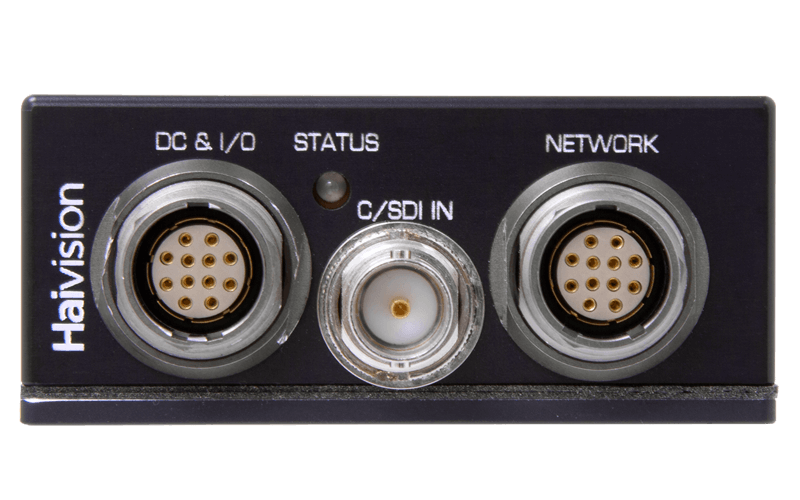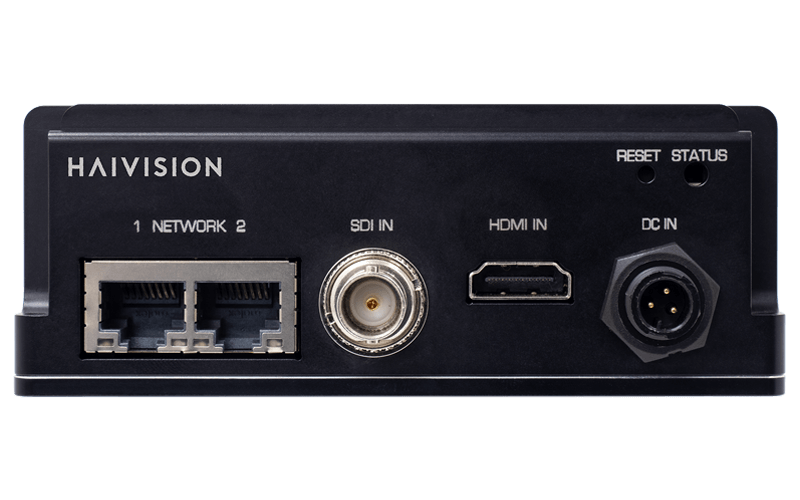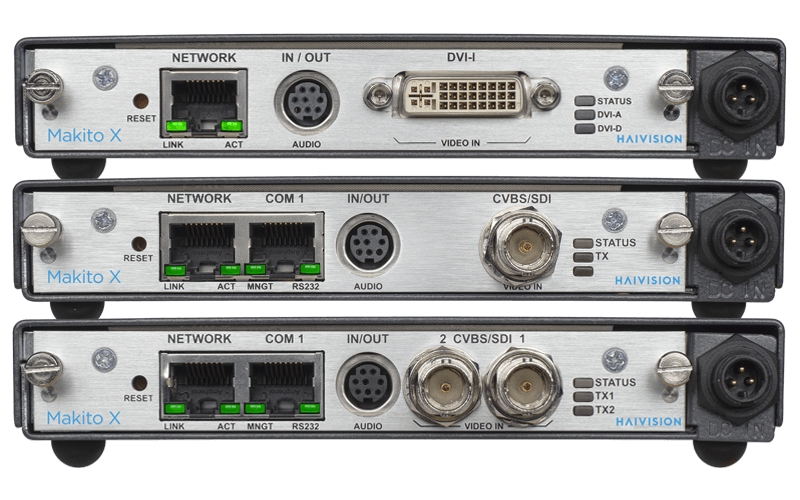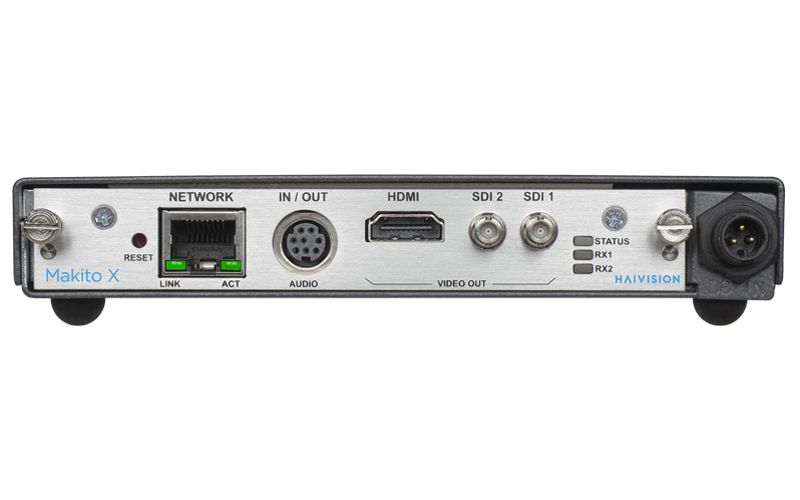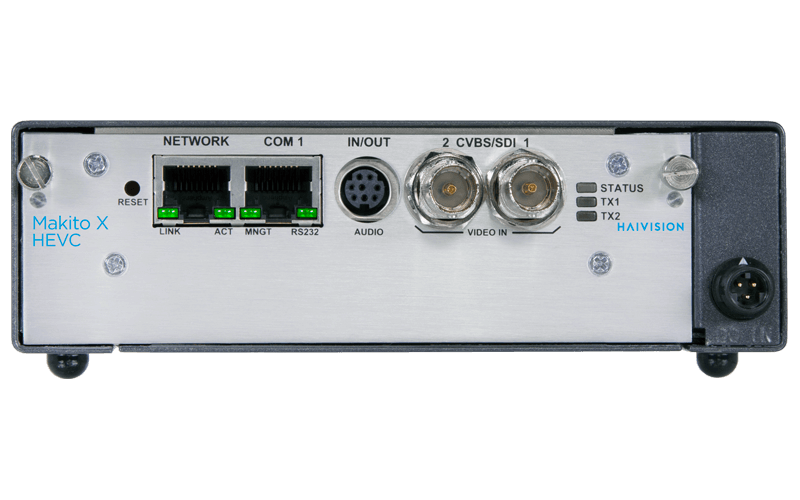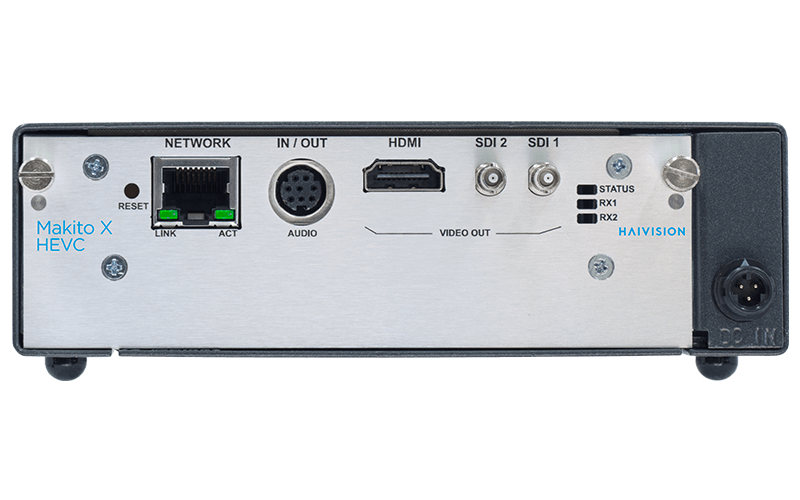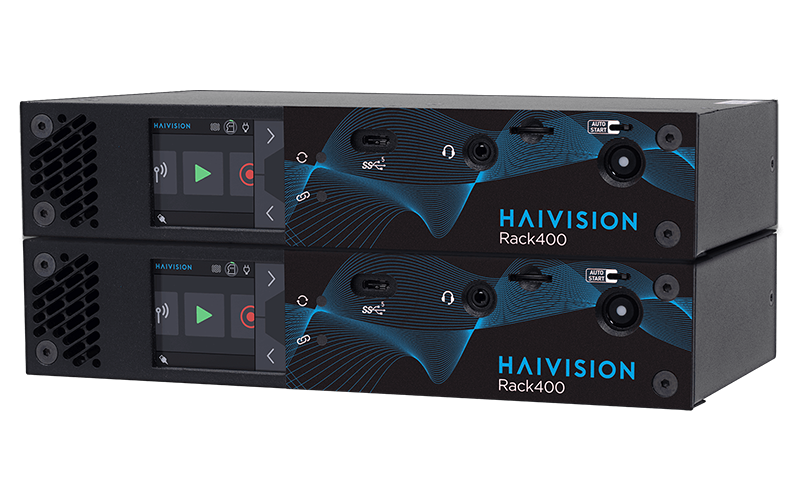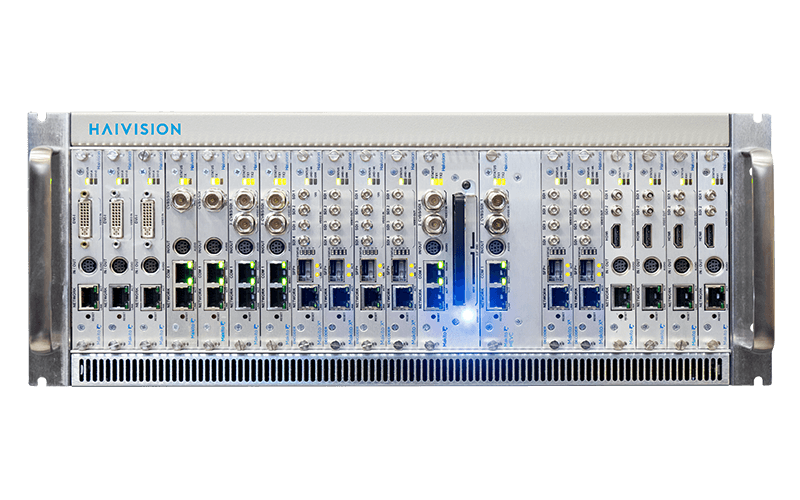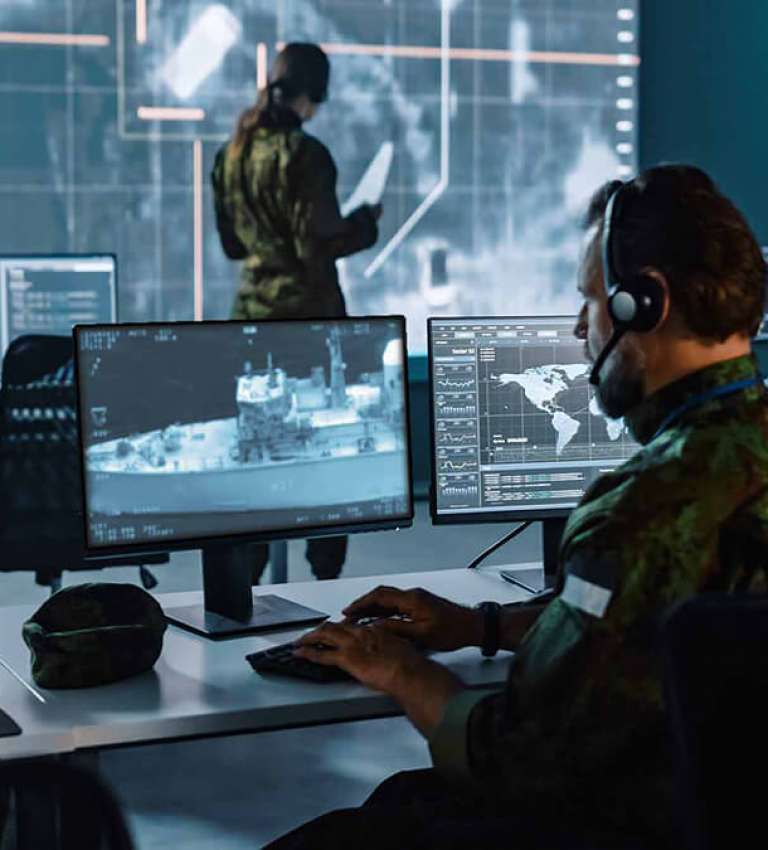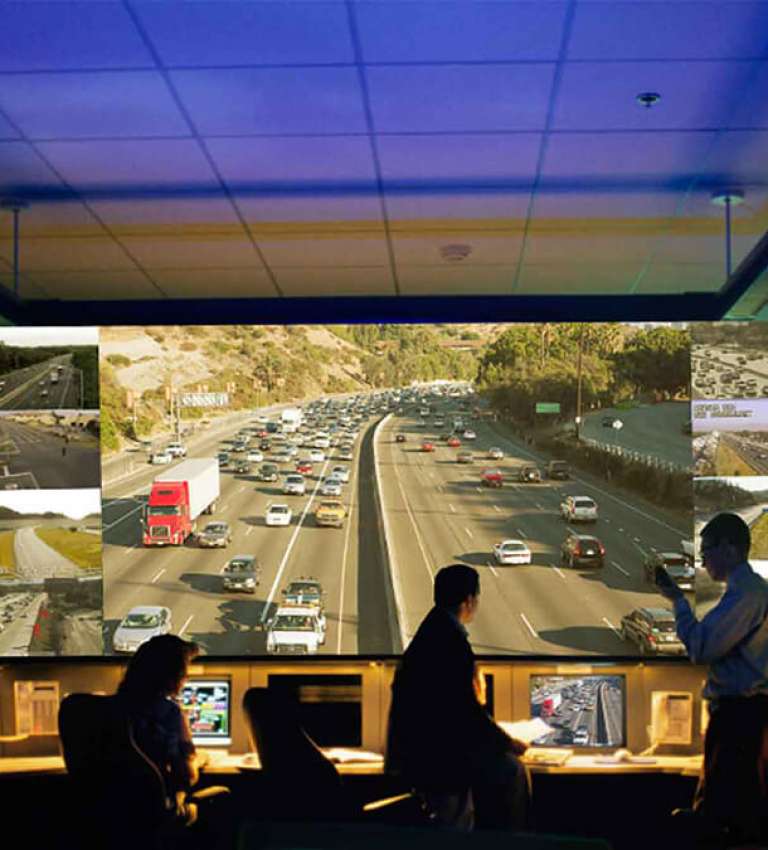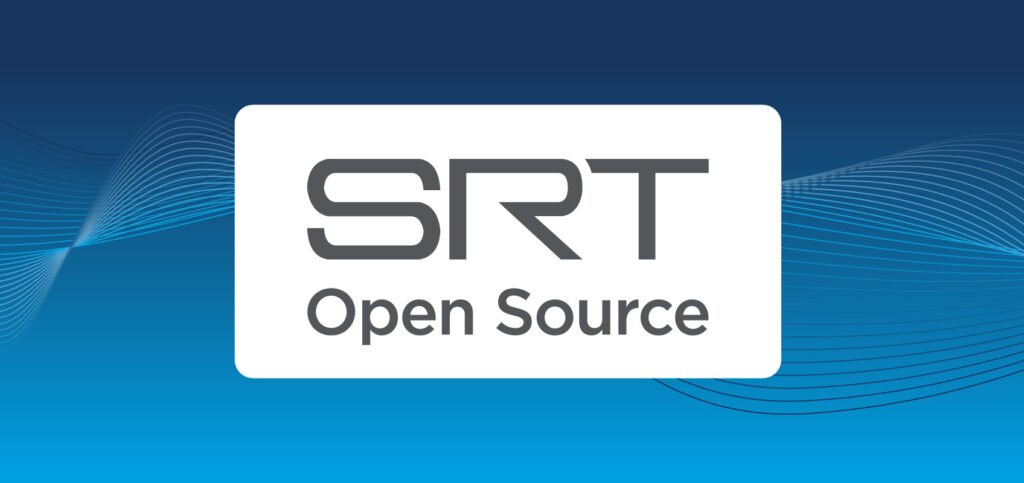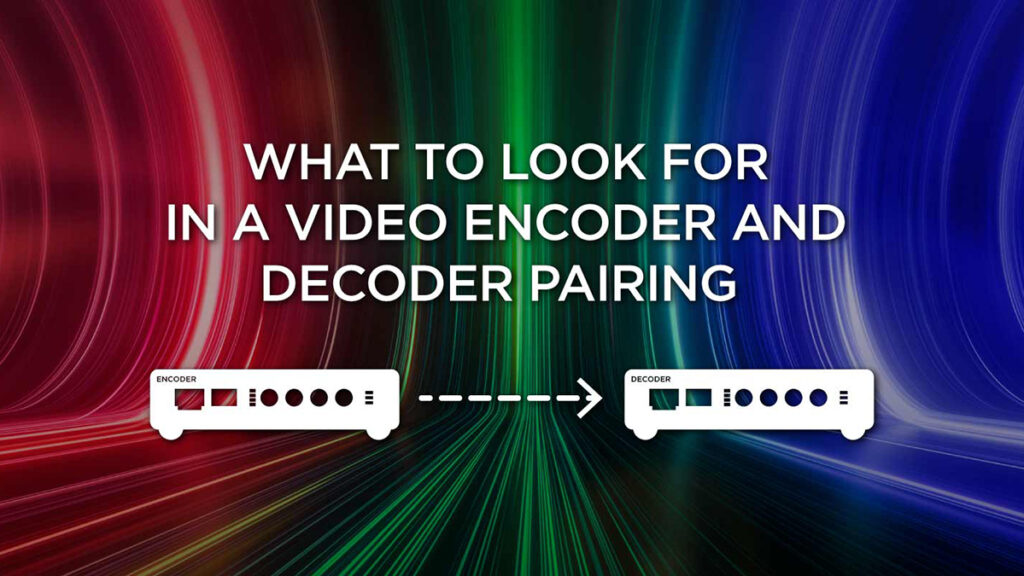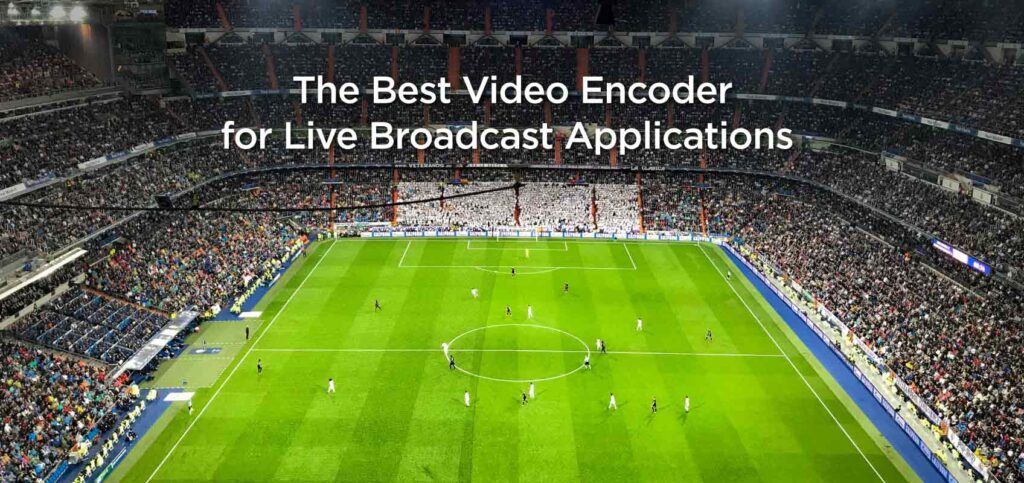Hardware & Software Video Encoders
Hardware encoders are turnkey devices solely dedicated to the fast, efficient, and reliable encoding of video streams. Video encoders have far superior processing power to software encoders and allow users to stream higher quality video at lower bandwidth rates with lower latency.
Software encoders can be installed on standard off-the-shelf hardware or as virtual machines (VM) in data centers or cloud platforms. Although software can be a great option for file-based encoding of video content, they don’t offer ultra-low latency levels comparable to dedicated hardware encoders and therefore not suitable for most live broadcast applications.
Haivision’s award-winning video encoders like the
Haivision Makito X series are trusted and relied upon by enterprises, government, broadcasters, major sporting leagues, and multi-site organizations around the world for their rock-solid reliability, security, pristine quality, and ultra-low latency.
Powerful and highly versatile, hardware video encoders are used for a wide variety of professional applications including:
Broadcast – for contribution,
backhaul, live remote interviews, return feeds, cloud and
remote production
Enterprise – for streaming of all-hands meetings and other business-critical corporate events, remote contribution, as
IPTV, and digital signage
Defense – for mission critical Intelligence,
Surveillance and Reconnaissance (ISR) and situational awareness applications
Video Codecs and Compression
Video encoders use
video compression codecs (such as
H.264/AVC or
H.265/HEVC) to reduce the raw content data by as much as 1,000 times. Building on the concepts behind H.264, its successor, H.265 or HEVC is fast becoming ubiquitous, thanks to the proliferation of 4K content.At an identical level of visual quality, HEVC enables massively improved compression allowing video to be compressed at half the
bitrate of H.264, making it twice as efficient. When compressed to the same bitrate as H.264, HEVC delivers significantly better visual quality. This is particularly important for 4K video, which takes up a huge amount of space with H.264. HEVC makes 4K video much easier to download and stream in the best quality possible.
How to Choose the Right Video Encoder
A video encoder is a critical component of any live video streaming workflow which makes selecting the right one for your use case an important decision. Not all video encoders are created equal, so how do you determine which one is best for your live video application? Here's a simple checklist with some important factors to consider.
Latency
To keep latency low in a video streaming workflow, you need to start from the beginning. If the video encoder is adding latency, there won’t be a way to “catch up” on that delay later in the streaming process. Therefore, choosing a
video encoder with very low latency from capture to streaming is crucial for minimizing total delay.
Quality
How important is video quality to your application? The video quality needed will greatly influence the kind of encoder required. There are video encoders that can stream in HD, HDR, and 4K UHD with 10-bit color spaces and 4:2:2
chroma subsampling, although not all workflows require that level of quality.
Reliability
Depending on the situation, some video encoders may have to contend with unpredictable IP networks such as the public internet. In order to ensure the reliability of the live video stream, some video encoders have features like adaptive bitrate encoding,
SRT with
packet loss recovery, and
hitless failover over redundant networks to ensure that the best quality video possible is always available and mitigate the risk of streams failing.
Transport Protocols Supported
Choose a video encoder that supports the video transport protocols best suited to your streaming application; for streaming encrypted video with packet loss recovery at very low latency, for broadcast contribution or live event production, consider an encoder that has native support for SRT.
Form Factor
Do you need a dedicated compact, lightweight hardware video encoder for a desktop setup or encoder blades for processing multiple cameras where space is at a premium? Some situations may require ruggedized video encoders for harsh environments, especially when operating outdoors. Other situations may need fanless operation for quiet spaces or low power consumption for mobile platforms.
Ease of Use and Support
While many broadcast engineers will be familiar with a variety of encoders and hardware, IT managers at corporate offices or volunteers at a religious or community organization may need a more user-friendly device with support available to them. Choosing an encoder with an intuitive web-based user interface makes it easy for system administrators to remotely configure an encoder.






















